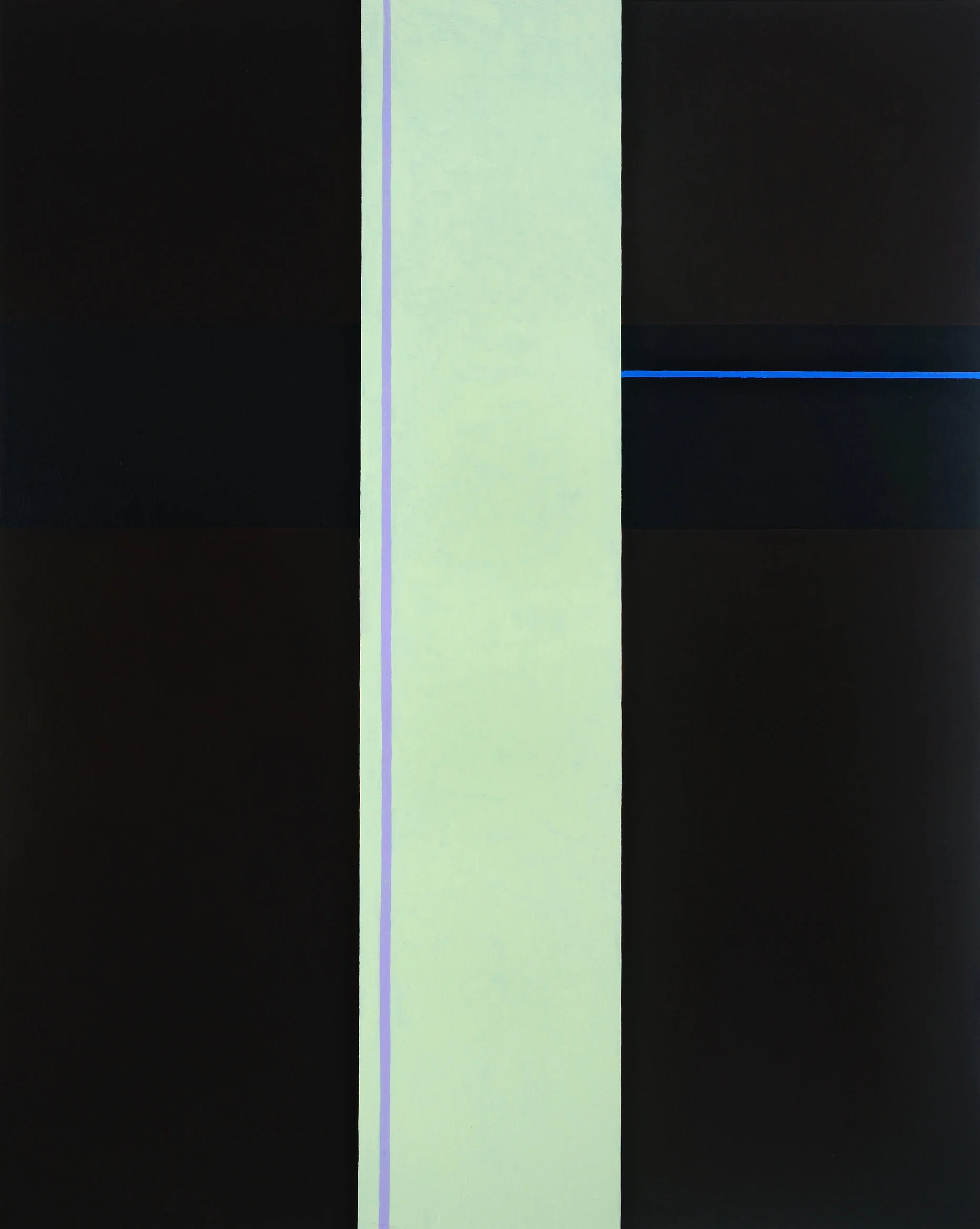Intersections / Dialogues
Introduction by Jean Lawlor Cohen
Strangely enough, Nan Montgomery’s paintings of bold geometry come out of a northeast D.C. studio that evokes a Renaissance master’s atelier. Lofty and, in many months, chilled, it holds linen canvases brushed with the elegance of centuries-old media—oil, a career-long preference, and egg tempera, concocted by her hand from purified water, raw egg yolk and powdered pigment. Works in progress lie flat or lean at arm’s length; finished ones, some at clerestory height, track across walls. Rows of paint tubes, crumpled to random shapes, form lines atop a broad counter. Within apparent disorder, one finds order—evidence of regimen in the pursuit of new directions.
Montgomery recounts an early turning point in her artistic self-discovery. Frustrated as many were by the seductive grip of Abstract Expressionism, she questioned the nature of her own brushwork. An artist/comrade/teacher, who had watched her art evolve, noted a duality in it that has factored and intrigued ever since—simultaneous gentleness and aggression.
Acknowledging this deep-seated opposition may well provide a way into the new paintings. Past works ranged across apparent extremes—systematic, symmetrical matrices for many years, then canvases that alluded to landscape or were embedded with botanical portraits of lilies or gladioli on surreal stems. All seemed to emerge from a shifting, short-term disenchantment with abstraction and a briefer, no less passionate affair with realism.
But now an accommodation prevails, as if the painter has negotiated a temporary truce between impulses. Hard-edge blocks and stripes advance across dark or light grounds, ensuring a stability that holds until the peripheral insertion of a softer, textured vertical. Indigo, for years her darkest, near-black signature color, still appears but, at times now, co-exists with a new velvety black. Early, outright, heraldic encounters seem to have given way to more contemplative engagement.
By calling a new oils series “Intersections,” the artist, no doubt unconsciously, leads some viewers to see the works as aerial perspectives. Such an unintended reading also happens with cruciform shapes often laid down at canvas center. Yet Montgomery has always denied religious allusion in the cross, employing it instead for its directional power. Indeed she credits the symbol to indigenous people of North America who also see it as an image of life path choices. She achieves that surface energy as well with the abutting rectangles, each axis propelling a subliminal charge beyond the painting’s edge.
Even as Montgomery moves among the forms inherited from her own past, she allows intuition to control her hand. Proof of a self-assured vision comes when, without hesitation, she refers to her thin, attenuated forms as “zips.” That syllable, an unavoidable evocation of Barnett Newman, describes the hovering element that suggests itself to her after a painting is fully underway. Within her crucial moment-to-moment process, the “zip” serves as a finish, a surprise that rocks her own (and our) expectation.
“Dialogues,” eight new, small egg tempura panels, each a square, features either a triangular form or a circle. For her these represent “eternal shapes.” Within each composition, a mirror-image symmetry rules, but surprising colors—pale and acid yellows, dark purple and rust—push and pull the eye across the sequence. She explains her process, “Layering is very important in egg tempera. I mix egg yolk and pigment paste on a palette, then brush the medium on a gessoed wood panel. Various pigments can be mixed to a desired hue, but a luminous surface derives from overlays of pure color.”
Color matters, of course, because Montgomery absorbed the thinking of her Yale teacher/mentor Josef Albers. His insistence that color is art’s “most relative medium” has always implied its ultimate mystery and volatility, its power of deception. Now, however, the dynamics of color, like that earlier fascination with botanical forms, seems less crucial than geometry. In her fresh commitment to the non-objective, Montgomery can take some reassurance from another Josef Albers notion—“ Abstraction is real,” he said, “probably more real than nature.”












